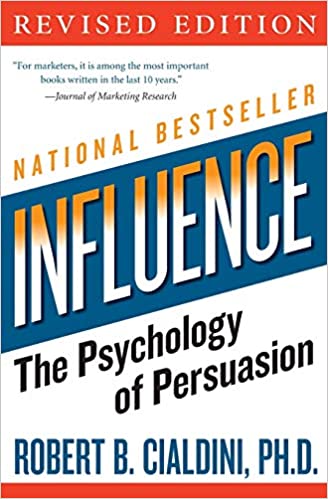
Influence
by Robert Cialdini
⏱ 16 minutes reading time
🎧 Audio version available
Body language clues – Decoding nonverbal cues
Body language can often speak louder than words. When someone is hiding their feelings, their nonverbal cues can give them away. Pay attention to their posture, facial expressions, and gestures. Are they avoiding eye contact or crossing their arms? These could be signs of discomfort or a desire to hide their true emotions. Similarly, excessive fidgeting or nervous behaviors may indicate that they are trying to conceal their true feelings.
Another important aspect of body language to observe is proximity. Does the person maintain a close physical distance or do they create distance by constantly moving away? This can provide valuable insights into their level of comfort and emotional availability. Additionally, observe their touch. Are they hesitant to initiate physical contact or do they avoid it altogether? These subtle cues can reveal their hidden emotions.
Understanding body language is a valuable tool in deciphering hidden feelings. By paying attention to these nonverbal cues, you can gain a deeper understanding of what someone may be hiding and address it openly.
Verbal cues – Understanding the language of concealment
While body language is essential, verbal cues can also provide valuable clues about concealed feelings. Pay attention to the words someone uses and how they express themselves. Are they avoiding certain topics or deflecting questions? This may indicate that they are intentionally hiding their emotions.
Listen for inconsistencies in their speech. Do they say one thing but their tone or choice of words suggests something different? This could be a sign that they are trying to conceal their true feelings. Additionally, pay attention to their use of qualifiers such as “maybe” or “perhaps.” These words can indicate uncertainty or a reluctance to express their emotions openly.
Another verbal cue to be aware of is deflection. When someone avoids answering questions directly or changes the subject, it may be a tactic to divert attention away from their true feelings. By recognizing these linguistic patterns, you can gain insights into what someone may be hiding.
Changes in behavior – Spotting inconsistencies and unusual actions
Behavioral changes can be strong indicators of concealed emotions. Take note of any sudden shifts in someone’s behavior towards you. Are they becoming more distant or withdrawing from activities you used to enjoy together? These changes could suggest hidden feelings that they are struggling to confront or communicate.
Similarly, observe any unusual actions or behaviors that deviate from their usual patterns. For example, they may start exhibiting signs of jealousy or possessiveness, acting out of character. These behaviors may be a result of their hidden emotions manifesting in unexpected ways.
It’s important to approach these changes in behavior with empathy and curiosity. Instead of jumping to conclusions, initiate open and honest conversations to understand the underlying reasons behind their actions.
Social media activity – Analyzing online behavior for hidden emotions
In today’s digital age, social media has become an integral part of our lives. It can also provide valuable insights into someone’s hidden emotions. Pay attention to their online activity, such as the posts they like or comment on. Do they engage more with posts that are related to topics they may be hiding their feelings about? This can indicate their subconscious desire to connect with those emotions.
Additionally, take note of any changes in their social media behavior towards you. Have they become less active or stopped interacting with your posts? This could suggest that they are trying to distance themselves emotionally.
However, it’s essential not to jump to conclusions based solely on social media activity. Use it as a tool to supplement your observations and initiate meaningful conversations to address any hidden emotions.
Intuition and gut feeling – Trusting your instincts
Sometimes, our intuition can be the most reliable indicator of concealed feelings. Pay attention to your gut feeling and any lingering doubts or suspicions you may have. If something feels off or inconsistent in your interactions with someone, there may be concealed emotions at play.
Trusting your instincts doesn’t mean jumping to conclusions without evidence. Instead, use it as a starting point for open and honest conversations. Communicate your concerns and observations in a non-confrontational manner, allowing the other person to share their perspective. This approach can foster trust and create an environment where hidden emotions can be expressed and addressed.
How to approach the situation – Communication and empathy
Approaching someone about their hidden feelings requires a delicate balance of communication and empathy. Start by creating a safe and non-judgmental space for open dialogue. Express your observations and concerns in a compassionate manner, allowing the other person to share their perspective.
Active listening is crucial during these conversations. Validate their emotions and provide reassurance that you are open to understanding their perspective. Avoid jumping to conclusions or making assumptions, as this can create a defensive response.
Emphasize the importance of trust and honesty in your relationship. Encourage them to express their true emotions, assuring them that their feelings will be heard and respected. Remember, this is a journey of mutual growth and understanding.
The importance of consent and boundaries
While it’s essential to address hidden feelings in a relationship, it’s equally important to respect boundaries and obtain consent from both parties. Some individuals may not be ready or willing to share their concealed emotions, and pushing them can create further discomfort or strain.
Respecting boundaries means acknowledging their need for time and space to process their emotions. Be patient and understanding, allowing them to open up at their own pace. Encourage open communication, but never force someone to reveal their feelings before they are ready.
Related: Understanding the Root Causes of an Inferiority Complex: A Guide to Self-Acceptance
The art of unveiling hidden emotions
Unveiling hidden emotions requires a delicate balance of observation, communication, and empathy. By being attuned to the telltale signs of concealed feelings, such as body language cues, verbal cues, changes in behavior, social media activity, and intuition, you can create a safe space for open and honest conversations.
Remember, hidden emotions are a natural part of human interaction, and addressing them can lead to greater trust, intimacy, and connection in your relationship. Embrace the art of unveiling hidden emotions and embark on a journey of emotional discovery and growth.
So, buckle up as we embark on a journey to decode the mysteries of concealed emotions and navigate the path to genuine connection.
What Is Snapreads?

With the Snapreads app, you get the key insights from the best nonfiction books in minutes, not hours or days. Our experts transform these books into quick, memorable, easy-to-understand insights you can read when you have the time or listen to them on the go.
